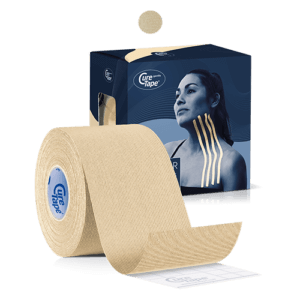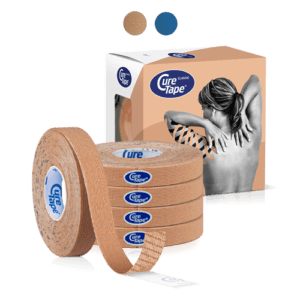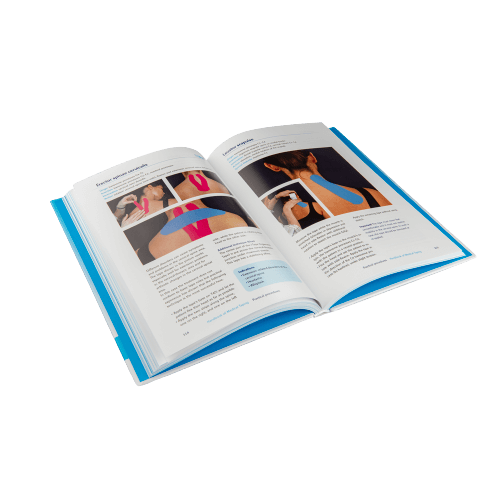Breast cancer complications and treatment options with CureTape®
Complications often arise during or after breast cancer treatment. Below are some of the most common complications associated with breast cancer treatment. Many of these complications can be effectively managed with CureTape® kinesiology tape.
Get started with these items to tape after breast cancer surgery
-
CureTape® Classic Kinesiology Tape
Bestseller $19.95
In stockSelect options This product has multiple variants. The options may be chosen on the product page
$19.95
In stockSelect options This product has multiple variants. The options may be chosen on the product page -
CureTape® Punch Kinesiology Tape
 $21.95
In stockSelect options This product has multiple variants. The options may be chosen on the product page
$21.95
In stockSelect options This product has multiple variants. The options may be chosen on the product page -
CureTape® Gentle – Kinesiology Tape for sensitive skin
 $23.95
In stockAdd to cart
$23.95
In stockAdd to cart -
CureTape® Classic 1cm Kinesiology Tape
 $34.95
In stockSelect options This product has multiple variants. The options may be chosen on the product page
$34.95
In stockSelect options This product has multiple variants. The options may be chosen on the product page
Managing Seroma Formation After Breast Surgery
One of the most common complications after breast surgery is the formation of a seroma. A seroma is a collection of fluid that builds up near the surgical scar. Typically, the body absorbs this fluid on its own, but when lymph nodes are removed during surgery, this process can be disrupted, leading to complications.
An edema physiotherapist or skin therapist can help manage seroma fluid by using specific drainage techniques. Additionally, applying lymph tape, as shown in photo 1, can aid in fluid drainage and provide relief.

photo 1

photo 2
Radiotherapy and connective tissue damage
Radiotherapy often leads to blockages in the connective tissue, a condition known as fibrosis, where the skin loses its suppleness. For those experiencing swelling in the arm (edema), it’s important to first treat the scar. This involves mobilising the scar and surrounding tissue, draining excess fluid, and then applying kinesiology tape.
To mobilise the chest area, apply a grid of CureTape® strips (photo 2). You can cut the strips yourself, use our CureTape Cutter or get the 1cm pre-cut strips of kinesiology tape. We have them in blue or beige! For the flanks, use narrow strips of CureTape® across the back (photo 1). This taping technique causes a fascial shift in the tissue, enhancing fluid drainage. It also promotes more aesthetic scar healing and softens fibrotic tissue. Even hardened scar tissue from radiotherapy can improve with lymphatic taping.
Lymphatic taping is a continuous treatment method. When tape is applied to stretched skin, it creates “convolutions” in a neutral position. This lifts the skin, creating pressure differences between the various tapes, which stimulates the fascial structures and provides a draining and pain-relieving effect.
Managing Lymphoedema After Axillary Gland Removal
Lymphoedema often occurs in the arm after axillary gland removal, either immediately or later on. You can actively use lymphatic tapge to help remove this excess fluid.
Apply CureTape® kinesiology strips to create a pathway that directs the fluid towards the side of the body where lymph nodes are still intact. These strips guide the oedema fluid along the tape, promoting effective drainage through the natural lymphatic pathways (anastomosis).

Managing pain and restricted movemen after radiotherapy
Many patients experience pain and restricted movement in the shoulder and/or arm following radiotherapy. Therapists can alleviate these symptoms using various kinesiology taping techniques.
Learn how to tape
- The Ultimate Taping Guide: Focuses on self-taping for the 30 most common injuries where taping provides support.
- Kinesiology Taping Method Manual: Designed for (para medical) professionals, covering basic taping techniques and various pathologies.
- Decompressive Taping Techniques Manual: Specifically focuses on lymphatic taping methods for decompression.
What are you waiting for? Order a copy today!
THYSOL is the manufacturer of the kinesiology tape brand CureTape. As CureTape, we have been training and supplying professionals for 25 years. And consumers now know how to find us too! By manufacturing all our tapes in our own factory, we can guarantee the best quality!
Please note that the indicated tape applications and information on our website about the possibilities with kinesiology tape have not yet been scientifically proven. The statements and examples mentioned are based on long-term experiences of patients and trained therapists.
Contraindications not to tape: pregnancy, open wounds, broken bones, unexplained complaints, allergies and skin diseases, use of medication such as blood thinners, thrombosis and fever. Always apply tape in consultation with a specialist.

